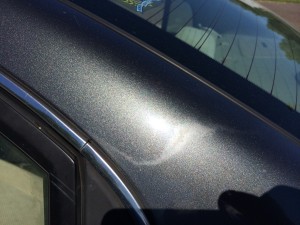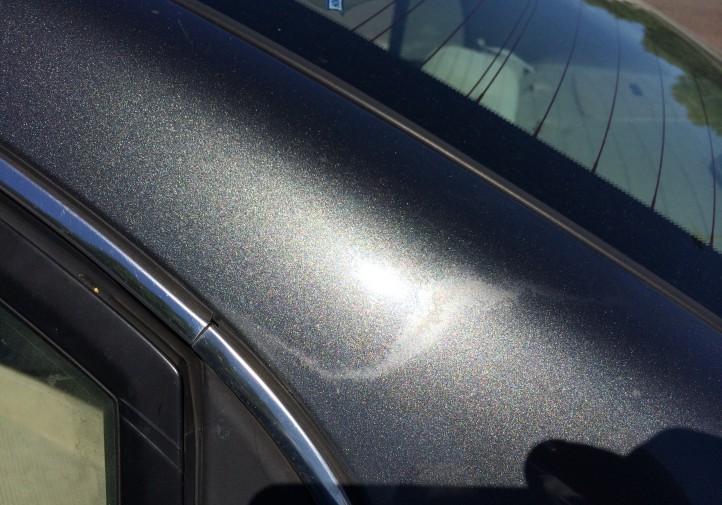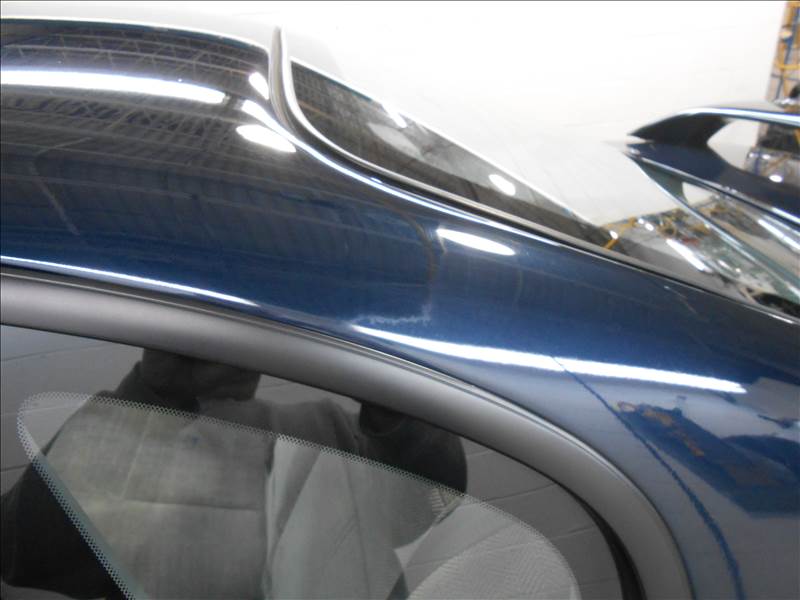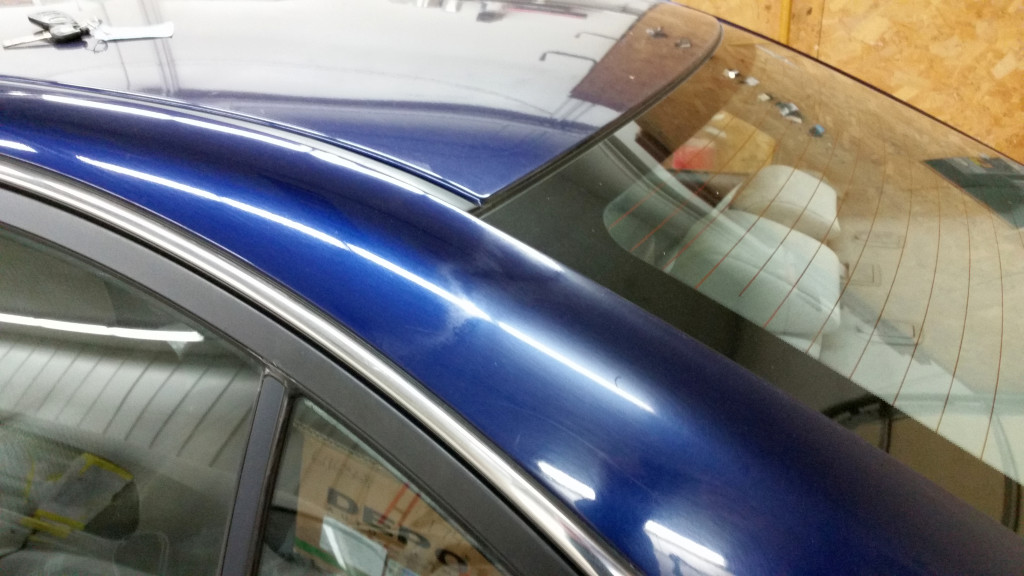
C-pillar photos give auto body shops visual case against blending clearcoat, paint
By onBusiness Practices | Insurance | Repair Operations
New pictures of C-Pillar paint blemishes solicited by Auto Damage Experts give collision repairers a visual argument to customers whose insurers want to blend clearcoat to save money.
The process, which leading paint manufacturers refuse to warranty, can be particularly attractive for C-pillars without a natural break point between panels. Paint companies say repairers must continue the refinishing “up and over” the entire surface, including any undamaged paint section, to insure the paint job’s integrity.
It costs more, “but it’s the right way to do it” Auto Damage Experts President Barrett Smith said Thursday.
To save money, insurers often will request repairers “blend” or “melt” the clearcoat into the nearby undamaged paint.
It looks fine — at first. Over time, the C-pillar will develop blemished areas like those depicted in the photos repairers provided to Smith. (Note: Gallery works best on desktop computers. By demand, we’ve provided copies at the bottom of the article for easy download.) And then the customer doesn’t blame the insurer — he or she blames the body shop, according to Smith.
Leading paint manufacturers asked about the process in 2014 by the Society of Collision Repair Specialists acknowledge that while this blending could be done as a cost-savings measure — presumably for out-of-pocket customers who make that choice.
However, its probability of failing over time meant they wouldn’t warranty it. PPG pointed out that it could also affect OEM warranties, and AzkoNobel said it wasn’t recognized by some car manufacturers as a proper repair.
“Blending the clearcoat requires that the thickness of clear be reduced in the blend area,” BASF OEM and industry relations manager Jeff Wildman wrote in a July 22, 2014, letter. “This can result in the clearcoat blend edge becoming visible after a period of exposure to sunlight and weather. The blend edge can also become visible if it is polished too aggressively.”
Axalta refinish product manager Stefan Reinartz described how the “before-and-after” appearance of the blend would look to a customer.
“While the blend may produce a finish that appears acceptable to the customer at the time of delivery, the blend edge can become apparent within the remaining service life of the vehicle,” Reinartz wrote in a Sept. 23, 2014, letter. “One reason for increased visibility of the blend edge is the potential for weaker adhesion of the clearcoat in the blend area. Another reason is the potential for poor weathering characteristics of the thin clearcoat edge in the blend area. The result is that the blend edge may look cloudy or dull with continued exposure to the sun and the elements.”
Smith said some of the nation’s larger insurers initially refuse to pay for the full “up and over” refinishing, and some direct repair program shops enable it.
“They’re doing it to increase efficiency and productivity,” Smith said of those DRP repairers, though he stressed later that not all DRP shops cut corners.
Insurers will usually relent when a body shop challenges that assessment, according to Smith, but “they don’t bend lightly.”
More information:
“SCRS Compiles Documentation on Clearcoat Application”
Society of Collision Repair Specialists, Sept. 25, 2014
Images:
Repairers solicited by Auto Damage Experts provided photos of failing C-pillar clearcoat-paint blends. (Provided via Auto Damage Experts)










